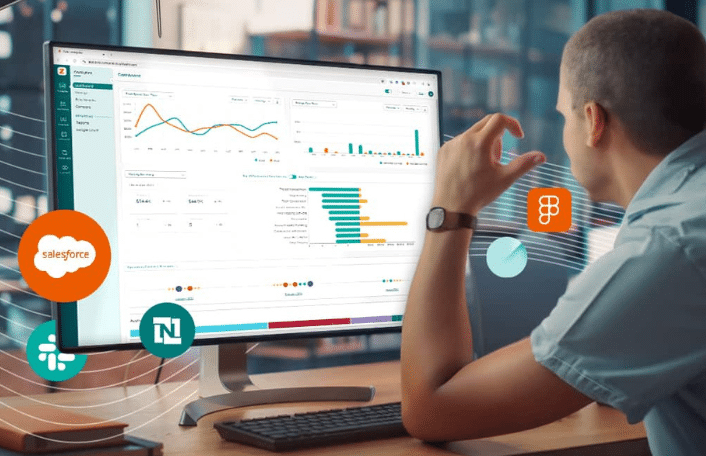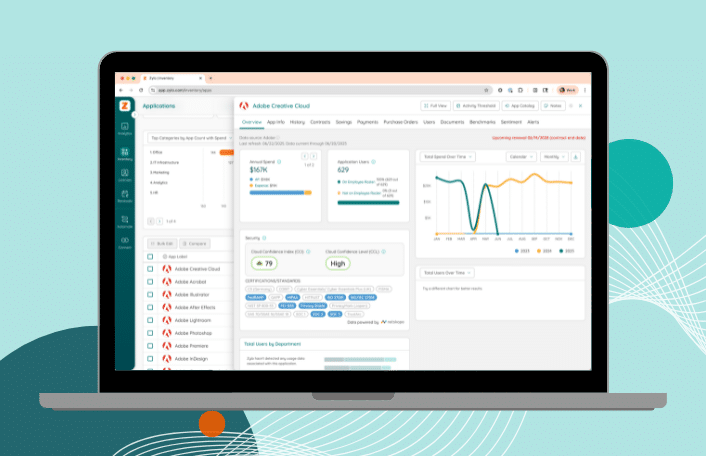
From Chaos to Control: Applying FinOps Thinking to SaaS
Table of Contents ToggleThe ROI for SaaS Comes from Productivity GainsChallenges...
Back
Back
Search for Keywords...
Blog

Table of Contents
As Software as a Service (SaaS) grows beyond a $299B market by the end of 2025, SaaS will become an increasingly dominant enterprise budget component that will need to be managed formally. However, this management effort will be challenging because SaaS has traditionally been treated as a Bring Your Own Technology category that can avoid traditional IT, finance, and procurement channels. To gain control of SaaS, here’s what technology budget holders, sourcers, and managers need to take into account.
First, cloud is seen as a key source of end user enablement, personalization, & productivity augmentation. Departments often started using SaaS because it was a force multiplier requiring minimal OpEx, meaning that these solutions often could slide under the radar of formal enterprise oversight from a financial perspective. In addition, the lack of infrastructure associated with SaaS means that IT & formal procurement can often be avoided entirely.
In addition, the ROI for SaaS tends to be so overwhelming that SaaS costs are often ignored, even if there are clear opportunities for cost optimization. To understand this, consider how one would calculate the ROI of SaaS.
The key metrics to consider are that the average fully loaded employee in the United States is comped about $30/hour and brings in $135 in revenue per hour. This means that the work of an employee considered to be a cost center is typically considered to be $30 per hour while the work of a profit center employee is considered to be at that $135 per hour metric.
When ROI is aligned with noticeable productivity, the project tends to provide an ROI starting at 5-10x. For applications supporting cost centers, this means that a $10/month app could be expected to save 2-3 hours per month per employee. For applications supporting profit centers, a $100/month app would be expected to save 4-8 hours per month or help bring in an extra $500-$1000 per month in revenue.
Although SaaS investments often avoid formal ROI analysis based on their relatively small costs, Amalgam’s experience with a variety of SaaS applications finds that this level of productivity is fairly typical when customers self-report or document their before-and-after productivity associated with a SaaS investment that is retained for over a year.
Although the ROI of SaaS is a benefit, the nature of SaaS as an easy-to-implement and high-value technology can also create challenges from an administrative perspective.
SaaS can lead to a financial conundrum where there are significant cost savings, but the initial administrators and purchasers are not very focused on optimization. Business managers rarely have the time to manage or analyze SaaS usage, meaning that they can easily be paying for accounts or functionality that are not being used. But this ROI allows buyers to support a deployment that may be two-to-three times the necessary footprint and still provide acceptable productivity benefits.
Also, line of business managers across the company may be setting up multiple instances or administrative hubs of the same application, whether it be Salesforce, Adobe, Google, Office 365, or others. This can make it difficult to purchase SaaS at scale effectively and may lead to multiple accounts for the same employee.
A final challenge that SaaS provides over time is that the spend and administration of SaaS outgrows the side job of the manager or Operational administrator initially assigned to SaaS, leading to the need for formal management. SaaS vendor and financial management is not a core task for customer or product-based business departments. Once SaaS gets in the way of actual business management, it is time to push this administration to dedicated tools and enterprise personnel.
The era of Enterprise SaaS has already started and is leading to the need for Enterprise SaaS Sourcing and Financial Management. As businesses notice the increasing growth of SaaS spend in their organizations, Amalgam provides this guidance to all administrative and managerial stakeholders to help manage these costs.
A good rule of thumb is that once a line of business manager is spending more than an hour a week on SaaS or SaaS spend exceeds $10,000 per month, it is a good time to offload the contracts, invoices, and account management to an outsourced solution or to formal IT, finance, accounting, or procurement resources who are incentivized to do this work as part of their core job description.
Financial and IT managers should be aware that unmanaged SaaS portfolios that have grown to a million dollars or more per year will likely have 20-30% in potential savings based on account consolidation, usage optimization, and sourcing at scale. However, to get these savings, finance and IT managers will need to discover and aggregate these costs by going through expense accounts and working with line-of-business managers who may have suspiciously large or quickly expanding miscellaneous expenses that may include SaaS. And managers should treat SaaS similarly to other complex spend categories as a line item that requires specialized and ongoing management.
Line of Business managers seeking to keep SaaS under management within their own departments because they want to maintain flexibility and control of SaaS must be aware that they are still responsible for being good stewards and maintaining enterprise-grade compliance across their technology footprint. To do so, Amalgam recommends using third-party solutions that can track all SaaS spend at once rather than relying on employees to manually download and track every vendor, account, invoice, and usage record on a monthly basis.
By providing this value analysis, warning, and guidance, Amalgam seeks to provide practical guidance and help enterprises to avoid unwanted cost overruns and surprises associated with poorly managed and quickly expanding SaaS portfolios.
ABOUT THE AUTHOR

Hyoun Park
Hyoun Park is Founder and Principal Analyst of Amalgam Insights, a firm focused on the finance, science, and managerial tools needed to support emerging business technologies. Over the past 20+ years, Park has been at the forefront of trends such as Moneyball, social networking, Bring Your Own Device, the Subscription Economy, and video as the dominant use of Internet bandwidth. Park has been quoted in USA Today, the Los Angeles Times, and a wide variety of mainstream and technology press sources. Park has an MBA from Boston University and a bachelor’s degree in Women’s and Gender Studies from Amherst College.

Table of Contents ToggleThe ROI for SaaS Comes from Productivity GainsChallenges...

Table of Contents ToggleWhy Data Integrity Breaks DownWhat Does Data Integrity...

Table of Contents ToggleThe ROI for SaaS Comes from Productivity GainsChallenges...

Table of Contents ToggleShelfware DefinedWhy Shelfware HappensPoor Organizational OversightShadow IT and...
| Cookie | Duration | Description |
|---|---|---|
| cookielawinfo-checkbox-analytics | 11 months | This cookie is set by GDPR Cookie Consent plugin. The cookie is used to store the user consent for the cookies in the category "Analytics". |
| cookielawinfo-checkbox-functional | 11 months | The cookie is set by GDPR cookie consent to record the user consent for the cookies in the category "Functional". |
| cookielawinfo-checkbox-necessary | 11 months | This cookie is set by GDPR Cookie Consent plugin. The cookies is used to store the user consent for the cookies in the category "Necessary". |
| cookielawinfo-checkbox-others | 11 months | This cookie is set by GDPR Cookie Consent plugin. The cookie is used to store the user consent for the cookies in the category "Other. |
| cookielawinfo-checkbox-performance | 11 months | This cookie is set by GDPR Cookie Consent plugin. The cookie is used to store the user consent for the cookies in the category "Performance". |
| viewed_cookie_policy | 11 months | The cookie is set by the GDPR Cookie Consent plugin and is used to store whether or not user has consented to the use of cookies. It does not store any personal data. |
